Inside the Churchill Bar’s lab
By Lauren BowesRotovaps, centrifuges and ultrasonic homogenisers… they’re all words we’ve heard of in the bar world, but we’re not always too sure what they mean – or we didn’t, until we visited the laboratory of the Churchill Bar and Terrace in London for a mixology science lesson.
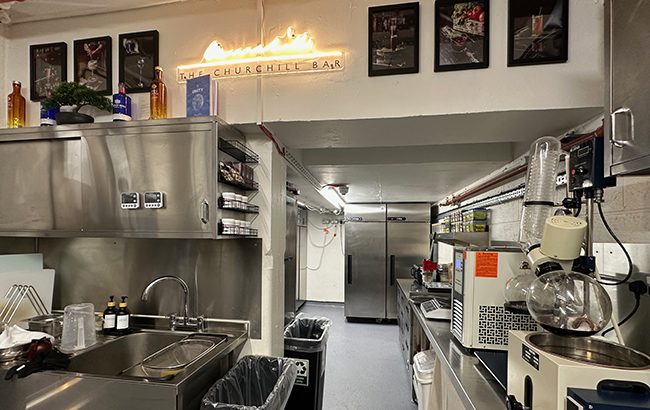
Inside the Hyatt Regency London – The Churchill hotel is a bar similarly named after the UK’s former prime minister, however our most recent visit took us away from the bar seating and array of glassware, down a secret stairway to the bar’s laboratory.
The area used to be a beverage store, but after “many months of fighting”, says bar manager Gaston Fusco, the team were able to transform it into a new space for experimentation. Much of the equipment has been sourced from other parts of the hotel, which was a benefit given the bar’s focus on sustainability.
“Sustainability is really big nowadays, but it’s almost impossible to be 100% sustainable for many reasons, including monetary reasons,” Fusco adds. “To do more, you need to have more human resources. You need to hire more people. We have always been a sustainable-focused bar, but we are now trying to do even more.”
The bar is currently serving up its second Unity menu. The first focused on the idea of uniting its three key team members: Fusco himself, who originates from Argentina but has Italian heritage; Vitor de Sousa, assistant bar manager, who comes from Portugal; and head mixologist Mitsuhiro Nakamura.
“What we did, basically, is to connect the dots,” explains Fusco. “It was 12 cocktails: four from the American continent, four from Europe and four from Asia. We brought different ingredients from each continent, and for the fourth cocktail from each of us, it was mandatory to play with the next continent.”
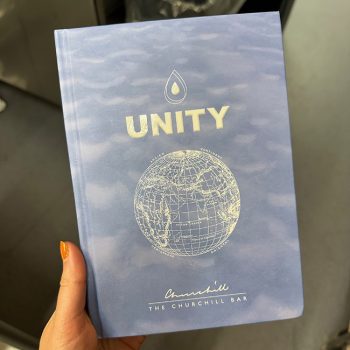
The second Unity menu, which will run until April next year, focuses on water. A key part of the concept is the harvesting of rainwater from the hotel’s rooftop, which is then processed through a filtration system and used to create a bespoke range of tonic waters.
The magnetic hotplate
To create the range, the team first had to create a base tonic syrup. Before trying the tonic, Fusco asks us if we’d usually drink it on its own, getting a resounding ‘no’. “Everyone replies the same, but potentially, after trying this tonic, you might change your mind,” he teases.
He says there are three elements to tonic water: water, cinchona bark (which provides the quinine), and a mix of dried citrus peels. To create the tonic syrup, these three ingredients are mixed with sugar and cooked using the magnetic hotplate.
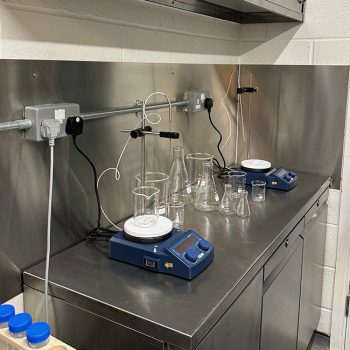
The magnetic hotplate stirs up to 1,500 revolutions per minute, with the Churchill bar team able to control both the speed and the temperature.
“What’s the difference between this equipment and a conventional induction?” asks Fusco. “With the induction, you need to take care of the liquid all the time – checking if it’s burning and distributing the liquid. It really helps us to save time and, as well, it is very slow and progressive, which is why it’s going to be really good.”
While the hotplate helps the team take their eyes off the syrup to do other things, Fusco is keen to emphasise that they don’t just use it for the sake of it – to create simple syrup, they stick with a traditional pot. It’s only when adding delicate botanicals that they implement the more refined technique of the magnetic hotplate.
Tonic syrup now created, it’s time to add flavours. The Unity menu features four flavoured tonics that also play on regions, as with the first Unity menu: Mediterranean, Asian, Caribbean and Middle Eastern. To create these variants, different botanicals are added to the ‘mother’ tonic syrup: apples and pears for the Mediterranean; genmaicha for Asia; mango for the Caribbean; and white rose petals for the Middle East.
On the menu, the tonics are paired with a spirit to create signature serves. The Marino is a blend of Remy Martin 1738 Accord Royal Cognac, Belle de Brillet pear liqueur, the Churchill’s Mediterranean tonic water and ‘marine aroma’, while Fresh Soul sees the Caribbean tonic matched with Amazzoni Maniuara Gin and coconut.
The Asian tonic is paired simply with Iichiko Silhouette Shōchū to create a served called Nagomi, while Purity is a combination of Desi Daru vodka, cardamom and the Middle Eastern tonic.
Picking the botanicals took some trial and error, with one notable error. Valerian root created a taste that was “something out of this world”, according to de Sousa, but the smell was a little different. “Imagine the smell of feet on a very hot day,” he laughs. “It’s the only way I can describe it.”
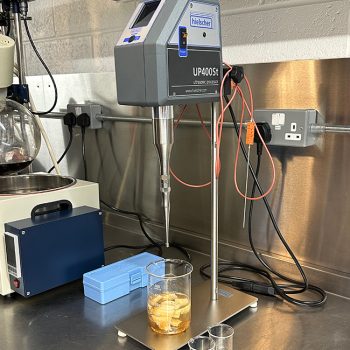
The ultrasonic homogeniser
Another way the bar is embracing sustainability is through reusing waste products, specifically the hotel’s uneaten pain au chocolat. The bar team creates a pain au chocolat vodka using the ultrasonic homogeniser, which is then blended to create the Churchill’s signature Espresso Martini.
The team also infuses Freud German whisky with croissants, adding to the single malt’s buttery notes, as well as using the peels from any breakfast fruits to create garnishes and botanicals.
The ultrasonic homogeniser is a relatively new technology for the Churchill team, which required a three-hour training session from a technician with a PhD in science and pharmacy.
To use the equipment, the team takes a container and places in a solvent – for instance, water or vodka. Then you add a flavourful ingredient, for instance mango, rosemary, or in this case, pain au chocolat. The machine’s probe moves up and down 25,000 times a second, Fusco explains, breaking down the ingredient into microscopic particles. “In this particle, you have all the quality and all the flavour from the product itself,” he adds.
The homogeniser is a better alternative to the sous-vide machine, Fusco says, because the former is like “a monster that takes the soul of a person. It will take the soul of the product, and combine it with the liquid in 15 minutes.” And because it involves no heating, the result is a fresher, more realistic flavour profile than can be achieved through cooking.
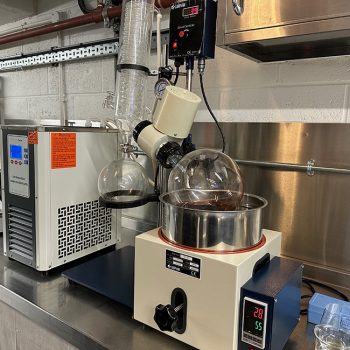
The centrifuge and the rotary evaporator
Our next experiments involved two pieces of equipment that have become much more common in mixology today.
The centrifuge spins at 40,000 rotations per minute, and the bar team uses it to clarify fresh juices. We try two grapefruit juices: one natural, and one that has taken a spin (or a few hundred thousand) in the centrifuge.
In the latter, the colour is almost all gone from the liquid, with a small amount of colourful pulp at one end. In terms of flavour, the intense sharpness of the grapefruit has been balanced out. “The soul and the flavour is there,” muses Fusco. “But it’s more friendly.”
The final piece of equipment we check out is the rotary evaporator – or rotovap, to those in the know. This essentially allows bars to distil their own spirits on a very small scale. When we visit, the team has filled the machine with its signature Negroni. As the rotovap heats the liquid, the alcohol evaporates, leaving behind a non-alcoholic Negroni without alcohol on one side and creating a Negroni-flavoured spirit at the other end.
The team has big plans for the future, with hopes to get their hands on a bigger rotovap and create a bespoke gin for the bar, “something that defines us as the Churchill bar”, as well as many more plans to increase their sustainability focus using their shiny equipment.
Related news
Welsh on-trade ‘excluded’ from rates reform
